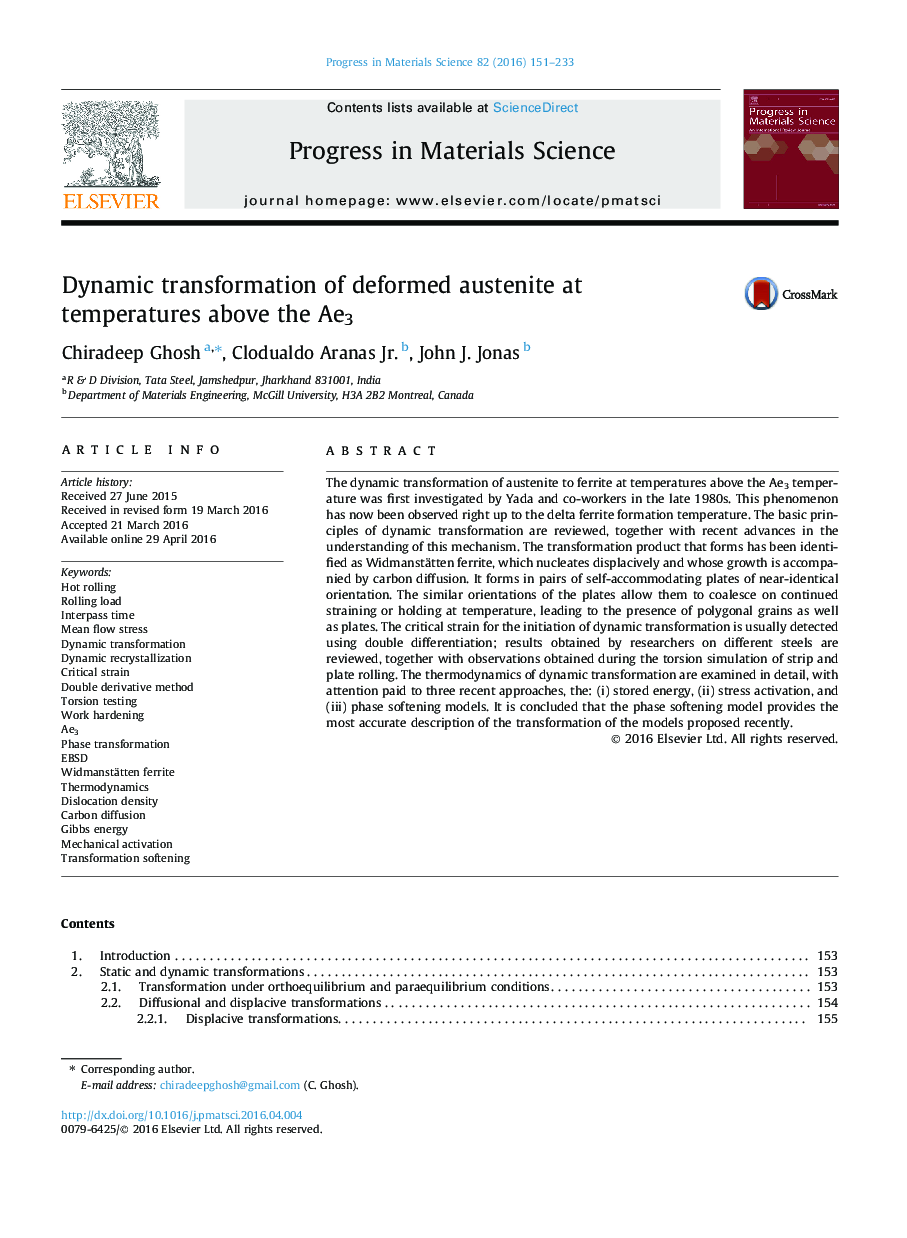| Article ID | Journal | Published Year | Pages | File Type |
|---|---|---|---|---|
| 1655820 | Progress in Materials Science | 2016 | 83 Pages |
Abstract
The dynamic transformation of austenite to ferrite at temperatures above the Ae3 temperature was first investigated by Yada and co-workers in the late 1980s. This phenomenon has now been observed right up to the delta ferrite formation temperature. The basic principles of dynamic transformation are reviewed, together with recent advances in the understanding of this mechanism. The transformation product that forms has been identified as Widmanstätten ferrite, which nucleates displacively and whose growth is accompanied by carbon diffusion. It forms in pairs of self-accommodating plates of near-identical orientation. The similar orientations of the plates allow them to coalesce on continued straining or holding at temperature, leading to the presence of polygonal grains as well as plates. The critical strain for the initiation of dynamic transformation is usually detected using double differentiation; results obtained by researchers on different steels are reviewed, together with observations obtained during the torsion simulation of strip and plate rolling. The thermodynamics of dynamic transformation are examined in detail, with attention paid to three recent approaches, the: (i) stored energy, (ii) stress activation, and (iii) phase softening models. It is concluded that the phase softening model provides the most accurate description of the transformation of the models proposed recently.
Keywords
Related Topics
Physical Sciences and Engineering
Materials Science
Nanotechnology
Authors
Chiradeep Ghosh, Clodualdo Jr., John J. Jonas,
